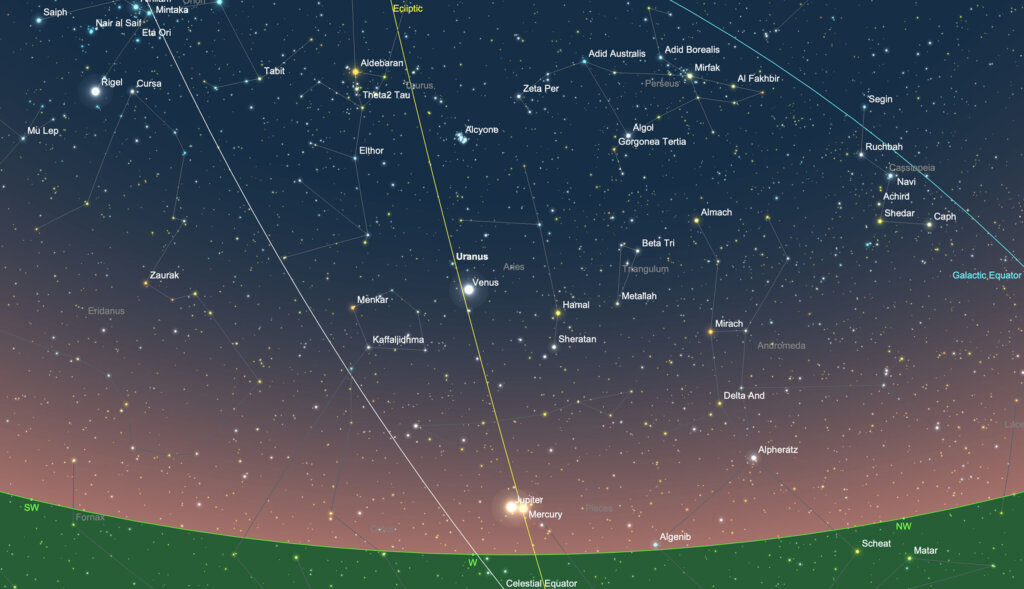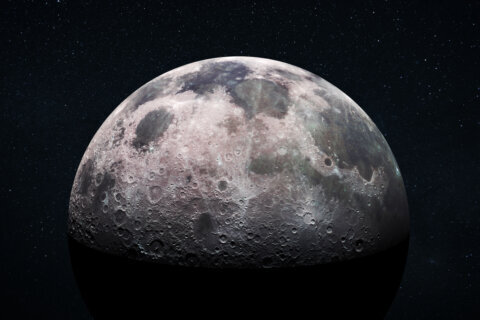
Exactly one month ago today, I wrote about the beautiful close pairing of Venus and Jupiter which I witnessed while crossing the Atlantic Ocean. And it was really something to see.
Recently the Internet has been abuzz about “Five Planets Visible 2023” to the tune of over five million hits in a Google search of the topic! The online media has picked up on the story, concentrating on Monday’s sky show.
Yes, there are five planets — Mercury, Venus, Mars, Jupiter and Uranus — that are currently aligned in the Western sky. On Monday, Jupiter and Mercury will be a “finger-width at arm’s length” (1 to 1.5 degrees) apart, their closest in this current sky show.
Jupiter will continue, in the days that follow, to move toward the horizon, while Mercury gets higher in the sky. But, they will be very close to the horizon after sunset and not easy to see.
Venus and Mars will be easy to spot visually while Uranus is very dim and hard to see.
If you want to try and see all five planets, you are going to have to do two things to maximize your chances of doing so.

First and foremost, you have to pick a spot that has a clear view of the Western horizon — one that has no buildings, or trees and is flat, if possible. This is essential as Mercury and Jupiter will be a LOW four-degrees above the horizon at 8 p.m. EDT, which is when you should start searching the sky for these two.
Any obstructions to your view of the Western horizon will probably block your view of them. I plan on going to Shenandoah National Park in Virginia to maximize my chances.
Secondly, binoculars, preferably wide-field, will greatly increase your chances of seeing Jupiter, Mercury and Uranus. Without them, your chances are minimal of seeing these three planets.

You can use Venus as a guide to finding the general area of much lower Mercury-Jupiter at 8 p.m. EDT, and the higher Uranus later when the sky is dark. Locate Venus in the sky, which will be easy to spot visually due to its brightness. Then use the sky chart, like the one above, which shows the other three planets in relation to Venus, and try to find them in the sky.
Jupiter is brighter than Mercury, and Uranus will have a greenish tint that distinguishes it from any other star. As a bonus, Mercury will become a bit easier to see in the next two weeks as it gets higher in the sky, so be on the look out for the “Winged Messenger,” especially on April 14 at 8:30 p.m. EDT, when it is 10 degrees above the Western Horizon.
Mars will be above the Moon and a cinch to see. Use binoculars to look at the Moon to see its craters and the dark lunar Maria, which are huge impact basins due to asteroids and comets that were filled in with lunar lava billions of years ago.
As always, check the weather, but forecasts show it should be clear in our area, at least around show time.
Two weeks from today, I am headed to Australia for April’s hybrid total solar eclipse, visiting the country’s premier astronomical facilities and imaging the wonderfully dark night skies.
Follow my astronomical adventures on Twitter @SkyGuyinVA and my daily blog to keep up with the latest news in astronomy and space exploration. You can email me at skyguyinva@gmail.com.







